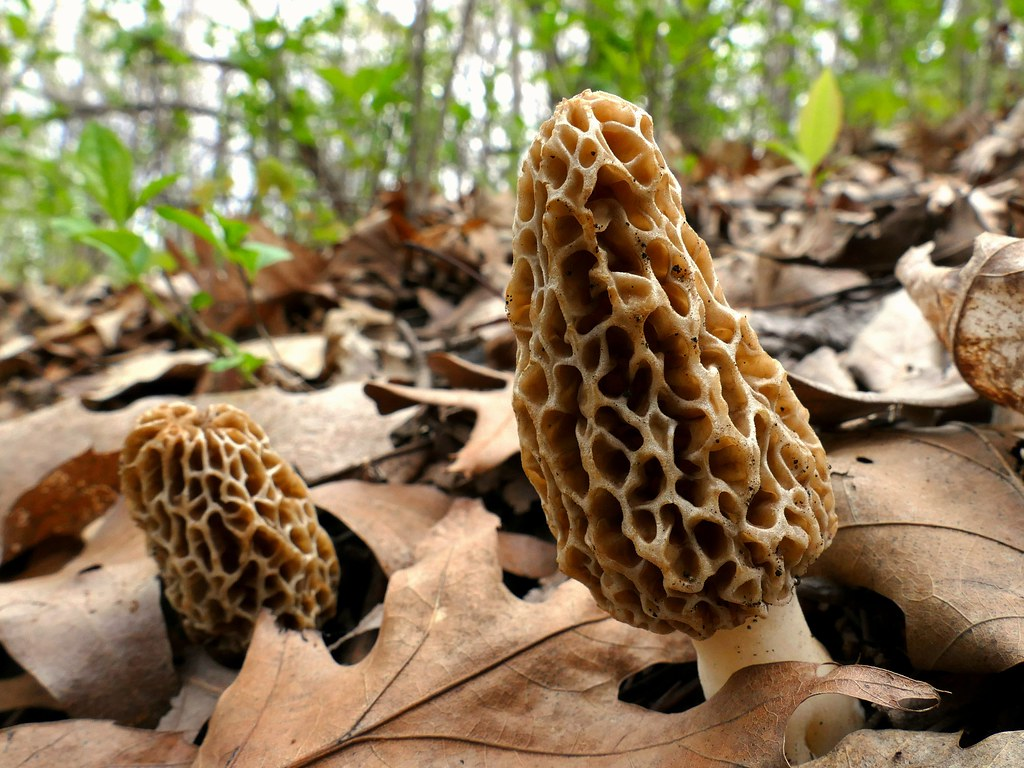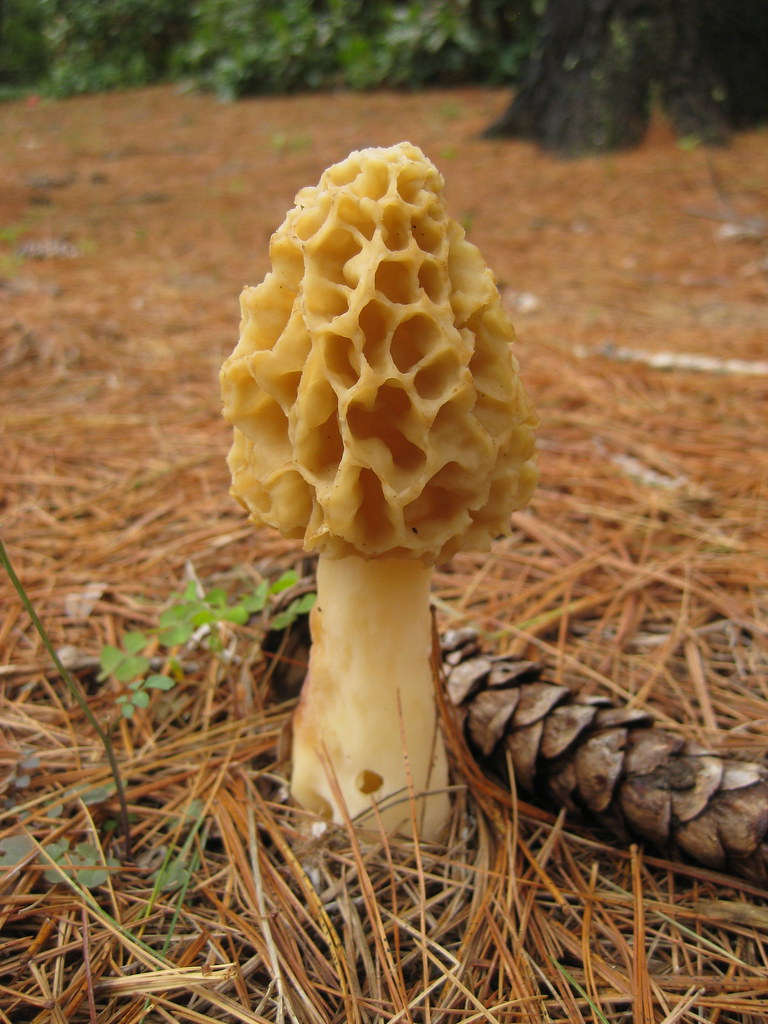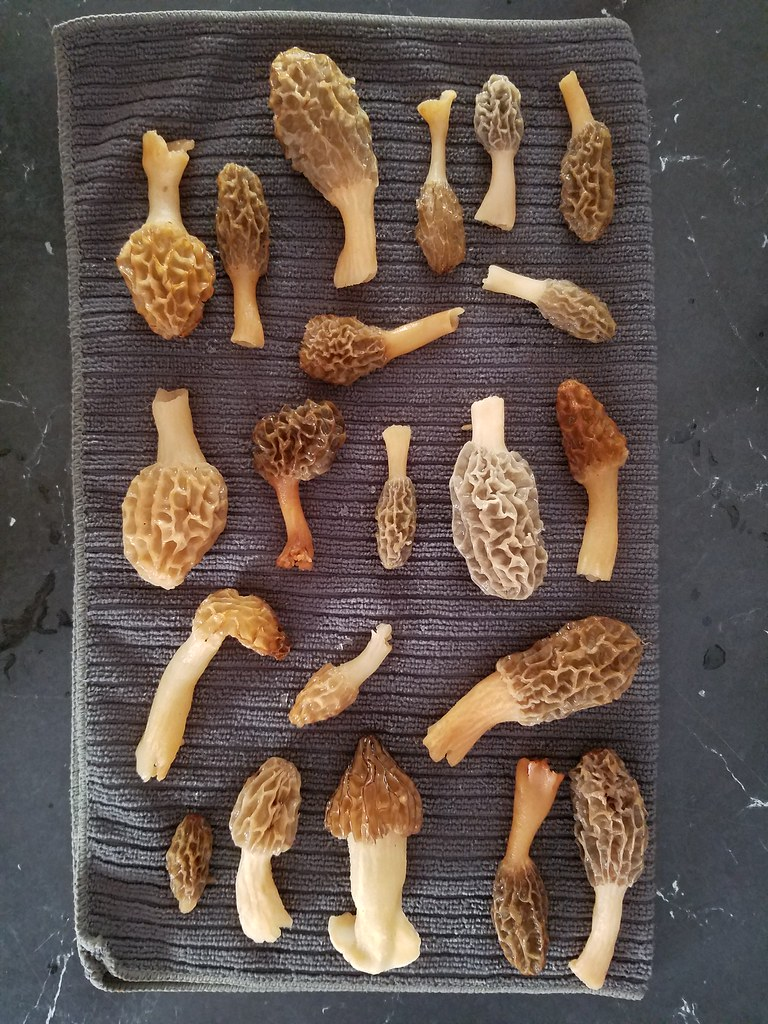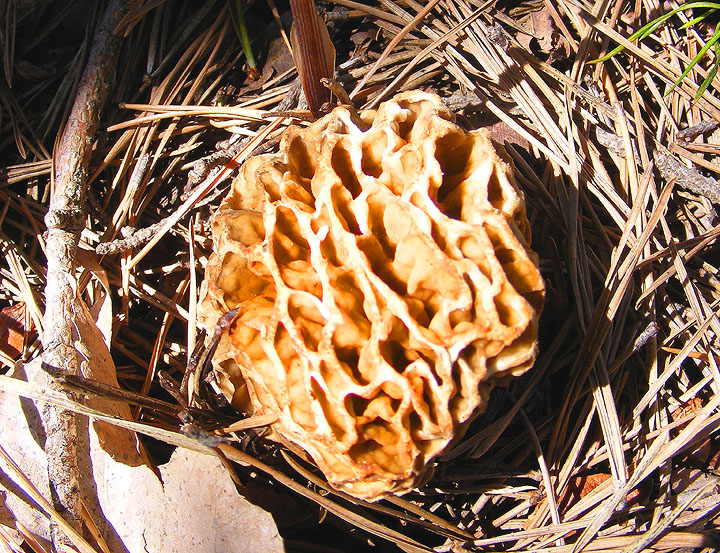Mushrooms are essential food materials that you can find in the kitchen. The flavor and texture are two factors of edible mushrooms that add sophistication to various dishes. These are important in increasing food acceptability and palatability. In this article, learn how to grow Morel mushrooms.

Yet, sometimes, you cannot find rare mushrooms in grocery stores. The only types that you can see are a few mushrooms, typically the normal ones with bland, jelly-like flavor and texture. But as they all say, you do not need to buy them if you can grow them.
One rare mushroom that is hard to find in grocery stores but best for culinary purposes is the morel mushroom. These types of mushrooms tend to be expensive in markets due to their complex flavor profile and rarity. This makes morel mushrooms to become an excellent addition to not just your mushroom collection but also to your kitchen rack.
However, growing your mushrooms can also be quite challenging. This is due to the many factors that you have to consider for them to grow in a suitable environment. With this, having a general background in growing them may also help.
This article provides general information about morel mushrooms. It generally explains their value and the difference between mushroom to vegetable farming. Also, it includes the basics on how to grow these delicious delicacies.
What Are Morel Mushrooms?

Mushrooms have different structures and flavor profiles, differing from each other. The presence of various flavor compounds affects their flavor profiles. These compounds may change through heat processing. Some mushrooms are very difficult to determine due to their identical appearances.
But morel mushrooms have a unique shape and form that can serve as a key to identifying them.
Morels, also known as Morchella, are fruits coming from a fungus. Morel mushrooms grow in damp, woody, and forest areas. Appearance-wise, these mushrooms come in black and yellow colors. Their conical bodies are usually characterized by a net-like structure resembling a honeycomb. Also, their light-brown colored stems are fleshy, which holds the mushroom upright.
If you are going to cut the mushroom open, you will see a hollow conical space for the mushroom’s body and stem.
What Is the Taste of a Morel Mushroom?

Morel mushrooms are very versatile. They can provide a variety of flavors, depending on how you use them.
If you are to taste a morel, you can recognize a rich, earthy flavor from the mushroom. This is one of the reasons why they are important and usually incorporated into a dish.
Oven drying these mushrooms can preserve their flavor throughout the year. Fresh and dried morels have different flavors due to the compounds present in them. These changes can give them a whole lot of value, depending on how you use them. You can also preserve morel mushrooms instead of using them in certain dishes.
How Rare Are Morel Mushrooms?
The rarity of morel mushrooms depends on their availability throughout the year. They are generally reproduced through commercial cultivation. But there are still no proven ways to mass cultivate morel mushrooms. With this, these mushrooms have been regarded as an unreliable crop. This also means that an individual must explore the wild to find them.
Finding it in their habitat is one of the tested ways to get morel mushrooms. Yet, the color of these mushrooms enables them to hide and blend with their surroundings.
This characteristic may make them hard to spot. Due to this, purchasing morels may cost up to a hundred dollars depending on the variety that you will buy. Your location may also affect the price of getting them.
Hurdles in Growing Morel Mushrooms

Growing Conditions
Trying to grow morel mushrooms can also be tough sometimes. Even though you meet the optimal conditions for growth, their spores may fail to grow. Fruiting bodies can generate more spores for your mushrooms to multiply. Growing them many times may accustom you to their optimal growth conditions.
Familiarity with the conditions for the growth of spores is crucial in cultivation. With your morel mushrooms, the conditions needed for cultivation are different. Commercial cultivation is a known method in mushroom farming. Yet, there is no guaranteed way to cultivate morels due to their growing conditions.
Inability to Grow Indoors
One of the factors why your morel mushrooms are not growing is due to their inability to grow indoors. Morels are comparable to other mushrooms that are easy to propagate however the conditions they need to grow are hard to replicate indoors.
These mushrooms need both nutrients from humus-rich soil and low-intensity sunlight to grow. Humus-rich soil provides the nutrients needed for the spore to bear a fruiting body. Dim sunlight warms the soil needed for the growth of morels.
Direct sunlight may reduce the moisture contained within the soil. Lack of moisture may inhibit the growth of spores.
Since these conditions cannot be replicated indoors unless they are subjected to strict laboratory conditions, the success rate of growing morels can be greatly reduced. Also, emulating these conditions may cost you a lot of money.
However, you can also purchase a growing kit that nearly satisfies some conditions needed for the growth of your morels. Like other processes, growing morel mushrooms requires persistence since their growth conditions cannot be freely manipulated in indoor environments.
Related: Mushrooms In Houseplants? This is Why They Are A Good Sign
Steps in Growing your Morels

Growing your morels can be frustrating, but also rewarding at the same time since these mushrooms are delicious, versatile, and can fetch a large sum of money depending on your target consumers.
Like all mushrooms, morels need spores or a morel spawn to proliferate. A morel mushroom kit can be obtained from a specialty store or through online shops for easier spawning. However, you can also hunt a morel in the wild and then recover your spores from there.
Growing Morels from Spores
- Boil your foraged morel.
Recovering your morel mushroom spores from a foraged morel does not only involve scraping since it may spread the spores, wasting potential morels. To increase recovery efficiency, you have to subject your morel, either shredded or chopped, to boiling water with one tablespoon of molasses and ¼ teaspoon of salt.
- Strain boiled morel using cheesecloth.
After boiling your morel in the solution, cool the liquid down and let it sit for two straight days. The cooled down liquid must be strained using cheesecloth which will remove the mushroom pieces. This way, you can recover a spore suspension which can be administered directly to planting sites.
- Add a layer of humus with compost.
As stated above, morel mushrooms need rich humus for them to grow optimally. After pouring your spore suspension into your planting site, you would want to put a thin layer of humus or peat moss combined with compost and wood chips to facilitate growth.
- Place under a shaded area.
Plant morel mushrooms under a shady area to increase the spawning rate since it emulates the conditions needed for growth. If you met the right conditions, you could see growth in a couple of days after administering the spore suspension in your planting sites.
After the initial growth, one or two days is enough for the fruiting body to mature. Leaving it longer may cause insects to inhabit the fruiting body or elements such as dust to be trapped inside the morel. Damaged mushrooms are more prone to infestations and are most likely inedible due to changes in appearance and taste.
Related: How To Get Rid Of Mushrooms In Lawn | Are Mushrooms Harmful To Grass?
How to Harvest Morel Mushrooms?
In harvesting your own morel mushrooms, cutting the base with a pair of field scissors or snapping the stem near the base are viable steps that may prevent the mycelium network of the mushroom from being damaged. Damaged mycelium networks prevent the transfer of important molecules for bioprocesses, such as water, nitrogen, and other minerals essential for growth.
It is also important that you harvest morels by cutting them off or pinching them at the ground level to reduce dirt in your harvest.
Needs of a Growing Morel Mushroom

Growing morel mushrooms are different from growing normal mushrooms since it does not grow well in indoor environments due to their growth requirements, such as rich humus and indirect sunlight, providing moderate heat.
Shade
Morel mushrooms can usually be found on the forest floor, lying around deciduous trees. This area presents the best condition for the growth of morel mushrooms. The shade offered by trees prevents the rapid drying of the forest floor, retaining enough water for mushroom growth.
Indirect Sunlight
Indirect sunlight may provide the needed temperature for morel growth while retaining the moisture present in the soil.
Loamy Soil
Additionally, morel mushrooms generally thrive in loamy soil with decaying materials such as wood. Using compost, specifically wood or wood ash, may boost the chances of growing your morel mushrooms.
Composted wood or wood ash may hold and retain moisture, keeping the soil damp which serves as the perfect environment for mushroom growth.
Changing Seasons
Seasons can also be considered a factor in the growth of morel mushrooms. Since winter and spring seasons are characterized by lower temperature and lower humidity, the moisture present in the soil can be retained, keeping your morels healthy.
However, in case you are situated in a country with a hotter climate, the best option for growing morel mushrooms is through the late fall.
Soil Moisture
It is important to consider the amount of moisture present in the soil, making it more conducive for the growth of mushrooms. Morel mushrooms need a moist environment to thrive.
Keep in mind that emulating the conditions present in the natural habitat of morel mushrooms may increase the chances of spawning from the spore suspension.
Are There Fake Morels In The Market?
Now, there are ways if you want to get these mushrooms for free. You can start growing your own through mushroom hunting. Finding one may permit you to get spores that can grow into morels.
But keep in mind that there exists a poisonous, morel-looking mushroom in the wild. These are false morels. It has a red tinge, a differentiating characteristic from true morels.
One way to find out if what you obtained is false or true is by cutting it in half. False morels do not have spaces when cut into half. Also, obtaining a guide containing the characteristics of mushrooms is crucial in foraging. A visual comparison of a specific mushroom can tell you whether it is poisonous or not.
In case you are still unsure about a specific mushroom, refrain from eating them. They may contain muscarinic and other related toxins which may harm your body. You can always find other mushrooms in the wild devoid of toxins.
What To Do If You Have Eaten Toxic Mushrooms?
But, in case you have eaten mushrooms that may contain toxins, seek medical advice. Vomiting may also help since it may enable you to expel parts of the mushroom that may affect your body. Medical advice may also grant you access to services or medication to get rid of poisoning.
Conclusion
Morel mushrooms are a great addition to your culinary mushrooms since it is highly versatile with a wide flavor profile that can complement many dishes depending on how it was preserved and processed. They have a hollow inner structure compared to false morels which are solid. Due to its rarity and a hard-to-emulate environment that satisfies its growth conditions, morel mushrooms are usually expensive in food markets.
To obtain these mushrooms for free, you can purchase a growing kit, or you can find a morel mushroom and use it to produce a spore suspension that can be used in growing your very own morel.
Remember to keep your soil damp to facilitate the growth of your morel mushroom. In case it does not work on the first try, remember that persistence is the key to growing and enjoy morel mushrooms. After a few tries, you may recognize some initial growth, and after a couple of days, your fresh morel mushrooms are ready to be used in creating your favorite dishes!
Editor’s Recommendations
Vegetable Downy Mildew Disease: Its Identification and Management for Good!
Identification and Control of Rust Fungus by Natural and Chemical Ways







